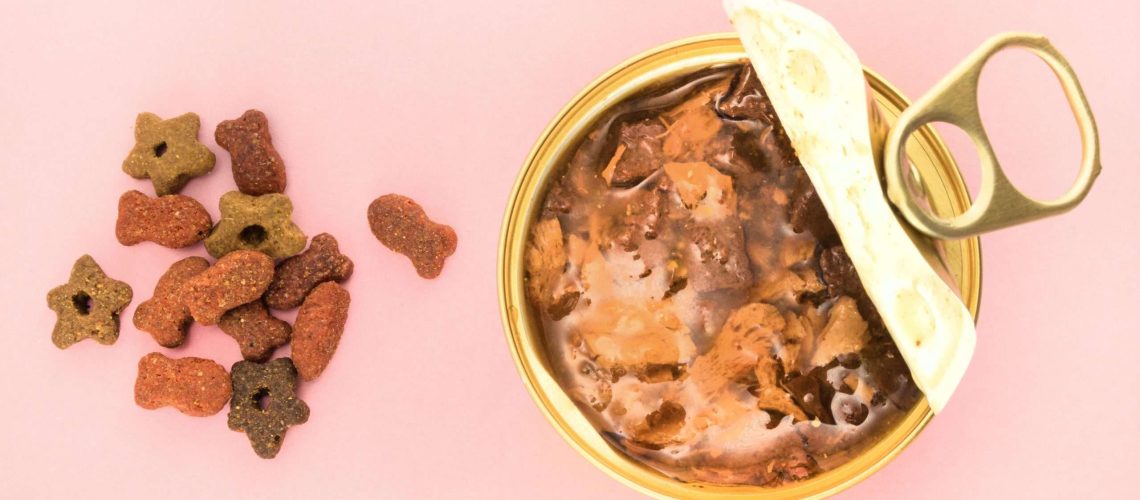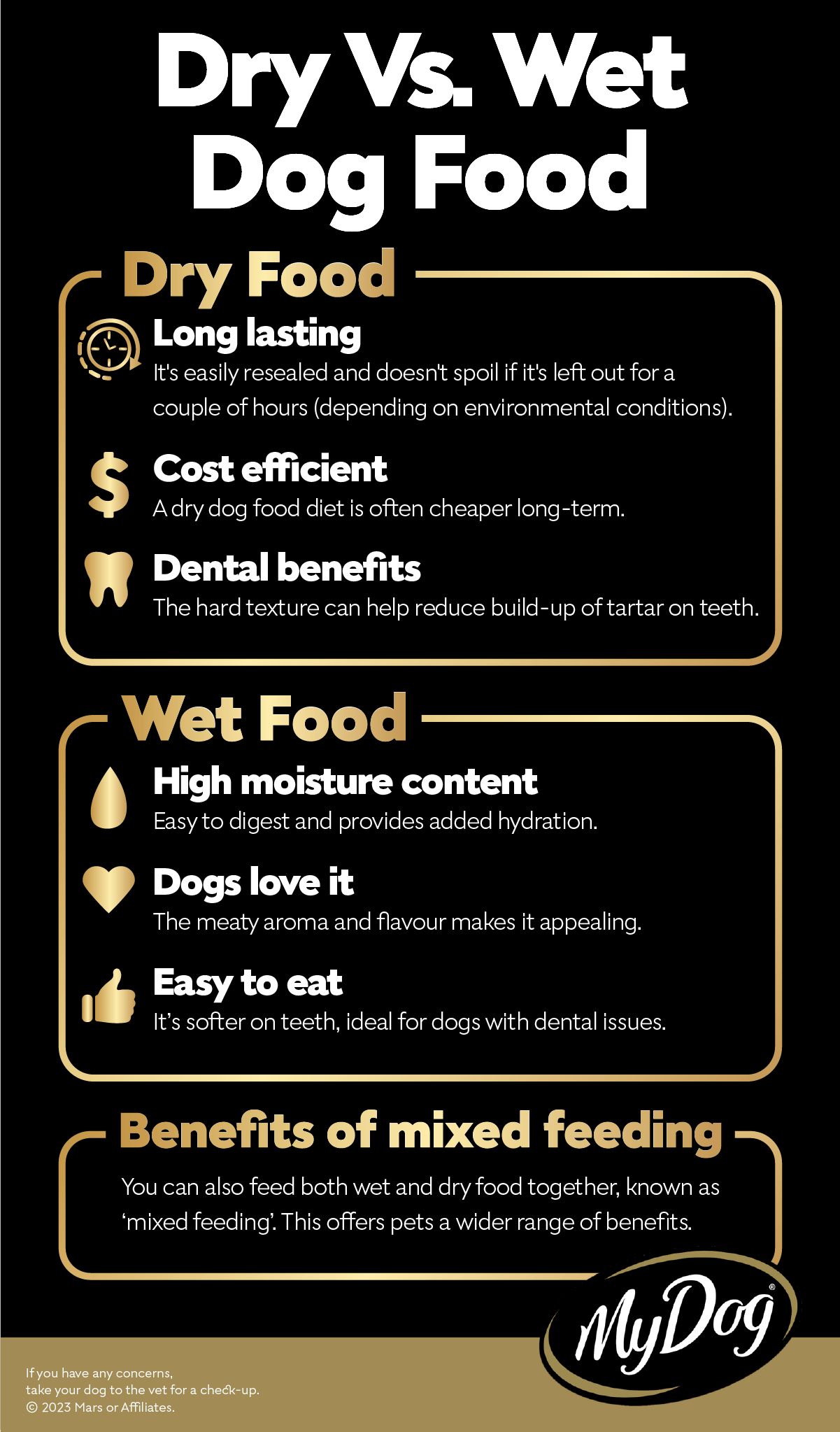Key Takeaways:
- Mixing wet and dry dog food can provide a balanced and varied diet for your pet.
- Wet dog food is more palatable and can help with hydration, while dry dog food promotes dental health and is more convenient to store.
- Mixing wet and dry dog food can be beneficial for dogs with specific dietary needs or picky eaters.
- However, mixing wet and dry dog food may lead to overfeeding if not properly portioned, resulting in weight gain or obesity.
- It is important to consult with a veterinarian to determine the appropriate ratio of wet to dry dog food based on your pet's age, breed, activity level, and health condition.
Are you a dog owner looking to provide the best nutrition for your furry friend? If so, then understanding the pros and cons of mixing wet and dry dog food is essential. This topic holds immense value as it can help you make informed decisions about your dog's diet, ensuring their overall health and well-being. By delving into this subject, you will uncover the benefits of combining these two types of food, as well as any potential drawbacks. So, whether you're considering this feeding method or simply curious about its effectiveness, let's explore the fascinating world of mixing wet and dry dog food together. Get ready to discover a whole new way to nourish your beloved pet!
The Benefits of Mixing Wet and Dry Dog Food
When it comes to feeding our furry friends, we want to make sure they are getting all the nutrients they need for a healthy and happy life. That's where mixing wet and dry dog food can come in handy. By combining these two types of food, we can provide a balanced diet that is both tasty and nutritious for our dogs.
Variety of Flavors and Textures
Mixing wet and dry dog food allows us to give our dogs a variety of flavors and textures to enjoy. Just like humans, dogs appreciate different tastes and textures in their meals. Combining wet food, which is usually soft and moist, with dry kibble, which is crunchy, creates an interesting eating experience for them. This variety can help prevent boredom at mealtime and keep your furry friend excited about their food.
Better Hydration
Wet dog food contains a higher moisture content compared to dry kibble. This extra moisture can be beneficial for dogs who don't drink enough water or have certain health conditions, such as urinary tract issues. By mixing wet food with dry kibble, you are increasing your dog's overall hydration levels, which is important for their overall health and well-being.
Cost-Effective Solution
Another benefit of mixing wet and dry dog food is that it can be a cost-effective solution for pet owners. Wet dog food tends to be more expensive than dry kibble due to its higher meat content and production process. By combining both types of food, you can still provide your furry friend with the nutritional benefits of wet food while stretching your budget further.
How Combining Wet and Dry Dog Food Affects Digestion
Feeding our dogs a balanced diet is not just about providing them with the right nutrients, but also ensuring their digestive system functions properly. When it comes to combining wet and dry dog food, there are a few ways it can affect digestion.
Improved Digestive Health
Mixing wet and dry dog food can actually be beneficial for your dog's digestion. The moisture content in wet food helps soften the kibble, making it easier to chew and digest. This can be especially helpful for older dogs or those with dental issues who may struggle with eating dry kibble alone. Additionally, the combination of wet and dry food can help regulate bowel movements and prevent constipation.
Potential for Upset Stomach
While mixing wet and dry dog food generally has positive effects on digestion, some dogs may experience an upset stomach when transitioning to this mixed diet. It's important to introduce the new food gradually over a period of several days to allow your dog's digestive system to adjust. If you notice any signs of gastrointestinal distress such as vomiting or diarrhea, it may be necessary to consult your veterinarian for guidance.
Individual Sensitivities
Just like humans, dogs can have individual sensitivities or allergies to certain ingredients in their food. When combining wet and dry dog food, it's important to pay attention to any adverse reactions your furry friend may have. If you notice any signs of itching, skin irritation, or gastrointestinal issues after introducing the mixed diet, it may be necessary to switch to a different brand or formula that better suits your dog's needs.
Potential Health Benefits of a Mixed Diet for Dogs
A mixed diet of wet and dry dog food can provide various health benefits for our canine companions. Here are some potential advantages:
Improved Nutritional Balance
Mixing wet and dry dog food can help ensure your furry friend receives a well-balanced diet. Wet food is often higher in protein and fat content, while dry kibble contains more carbohydrates. By combining the two, you can provide a mix of essential nutrients that support your dog's overall health and energy levels.
Weight Management
A mixed diet can also assist with weight management for dogs who need to shed a few pounds or maintain a healthy weight. Dry kibble tends to be lower in calories compared to wet food. By incorporating some dry kibble into their meals, you can help control portion sizes and prevent overfeeding.
Joint Health Support
As dogs age, they may develop joint issues such as arthritis. Certain ingredients found in wet dog food, such as glucosamine and chondroitin, can help support joint health and reduce inflammation. By mixing wet food with dry kibble that contains these beneficial ingredients, you are providing extra support for your dog's joints.
Can Mixing Wet and Dry Dog Food Help Prevent Dental Problems?
Dental problems are common in dogs, but mixing wet and dry dog food can play a role in maintaining good oral hygiene. Here's how:
Promotes Chewing
Dry kibble has a crunchy texture that requires more chewing compared to wet food. Chewing helps remove plaque buildup on the teeth, which can contribute to dental issues such as tartar and gum disease. By including some dry kibble in your dog's diet, you encourage them to chew more thoroughly, promoting better dental health.
Tartar Control
The abrasive texture of dry kibble can help scrape away plaque from the teeth while chewing. This can help prevent the formation of tartar, which is hardened plaque that can lead to dental problems. Mixing wet and dry dog food allows for this mechanical action on the teeth, contributing to better oral hygiene.
Drawbacks of Blending Wet and Dry Dog Food Together
While there are many benefits to mixing wet and dry dog food, there are also a few drawbacks to consider:
Storage and Spoilage
Wet dog food needs to be refrigerated once opened and has a shorter shelf life compared to dry kibble. If you mix the two together, you may need to store the remaining portion in the refrigerator, which can take up space in your fridge. Additionally, if not consumed within a certain time frame, the mixed food may spoil and become unsafe for your dog.
Inconvenience
Mixing wet and dry dog food can be more time-consuming compared to simply pouring out one type of food. It requires measuring portions of each type of food and thoroughly mixing them together before serving. If you have a busy lifestyle or prefer convenience, this extra step may not be ideal for you.
Determining the Right Ratio of Wet to Dry Dog Food
The ratio of wet to dry dog food will depend on various factors such as your dog's age, size, activity level, and overall health. It's important to consult with your veterinarian to determine the appropriate ratio for your furry friend. However, as a general guideline:
- Aim for approximately 25-50% wet food and 75-50% dry kibble by volume.
- If your dog prefers wet food or has specific dietary needs, you can adjust the ratio accordingly.
- Monitor your dog's weight and overall condition to ensure they are receiving the right amount of food and adjust the ratio if necessary.
The Importance of Consulting a Veterinarian for a Mixed Diet of Wet and Dry Dog Food
Before making any changes to your dog's diet, it's crucial to consult with a veterinarian. They can provide personalized recommendations based on your dog's specific needs and health conditions. A veterinarian will consider factors such as age, breed, activity level, and any underlying health issues when advising on the appropriate ratio of wet to dry dog food.
Additionally, if you notice any adverse reactions or changes in your dog's behavior or health after introducing a mixed diet, it's essential to seek veterinary guidance. They can help determine if the new food is suitable for your furry friend or if adjustments need to be made.
Remember, every dog is unique, and what works for one may not work for another. Consulting with a veterinarian ensures that you are providing the best possible nutrition for your beloved canine companion.
In conclusion, mixing wet and dry dog food can provide a balanced diet for dogs, with the wet food offering hydration and taste while the dry food helps clean their teeth. However, it is important to consult with a veterinarian to ensure the right balance and portion sizes for your furry friend.
Is it OK to mix wet and dry dog food together?
A mixed feeding approach, incorporating both wet and dry diets, can provide numerous benefits for your dog during mealtime. By including a combination of wet and dry food, your dog will have the opportunity to experience a variety of textures and flavors, making them more likely to try new foods.
How much should I feed my dog when mixing wet and dry food?
When combining dry and wet diets, it is important to follow specific feeding guidelines for each type of food. For instance, if you are feeding a 50:50 ratio, we suggest giving 50% of the recommended portion of wet food and 50% of the recommended portion of dry food.
What are the disadvantages of wet food for dogs?
Advantages of wet food include better taste, higher protein and fat content, and ease of consumption. Disadvantages include the potential for weight gain, spoilage, higher cost, and dental problems. Wet food is particularly suitable for smaller dogs who have lower energy needs for their daily activities.
Do dogs poop less on wet food?
The high moisture content of wet dog food, at around 70-75%, compared to the low moisture content of dry kibble at only 10%, is the reason why wet food can cause loose stools in dogs. Additionally, the high protein and fat content in canned foods also contributes to the bulkiness of stools.
What are the benefits of mixing wet and dry dog food?
Combining wet dog food with dry dog food improves digestion and nutrient absorption. Wet food, which is rich in moisture and protein, enhances the taste of meals and helps the body effectively process the necessary nutrients for your dog's health.
Why do people mix wet and dry dog food?
Offering dogs a combination of wet and dry food rather than solely dry kibble improves taste and encourages their hunger. Wet dog food has a more potent scent and flavor in comparison to dry kibble, making it highly attractive to dogs. This is particularly beneficial for selective or choosy eaters, as well as dogs with decreased appetite.

















